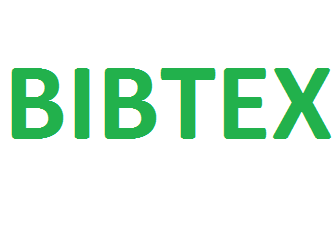
The Academic Perspective Procedia publishes Academic Platform symposiums papers as three volumes in a year. DOI number is given to all of our papers.
Publisher : Academic Perspective
Journal DOI : 10.33793/acperpro
Journal eISSN : 2667-5862
Enhancing Photovoltaic System Performance with MPPT-PID Controller Using Particle Swarm and Tasmanian Devil Algorithms
Abstract
In photovoltaic systems (PV), given the non-linear relationship between voltage and power, the implementation of a controlled power electronic converter is essential to achieve the desired voltage level. In this study, the boost converter is controlled by an MPPT-PID controller to obtain maximum power from the designed PV system. The PID (proportional-integral-derivative) controller parameters are determined by Particle Swarm Optimization (PSO) and Tasmanian Devil Optimization (TDO) algorithms. The objective function, Integrated Time Weighted Absolute Error (ITAE), is selected for the engineering problem. The system was applied to a series of tests within the MATLAB/Simulink environment, encompassing constant irradiance-fixed load, variable irradiance-fixed load, and constant irradiance-variable load conditions. A comparative analysis was subsequently performed. The performance of the scenarios was analyzed by peak value, overshoot ratio, rise time, and converter efficiency. The findings emphasize the important role of parameter optimization in enhancing energy efficiency and contribute to the current state of knowledge, leading to the development of more effective control strategies in solar energy systems.
References
[1] Usman M, Balsalobre-Lorente D, Jahanger A, Ahmad P. Pollution concern during globalization mode in financially resource-rich countries: Do financial development, natural resources, and renewable energy consumption matter? Renew Energy 2022;183:90-102. doi: 10.1016/j.renene.2021.10.067.
[2] Birleşmiş Milletler. Paris İklim Anlaşması. Nov. 2016.
[3] Erkul A. Monokristal, Polikristal ve Amorf-Silisyum Güneş Panellerinin Verimliliğinin İncelenmesi ve Aydınlatma Sistemi Uygulaması. Yüksek Lisans Tezi, Gazi Üniversitesi Fen Bilimleri Enstitüsü, Elektrik-Elektronik Mühendisliği Anabilim Dalı; 2010.
[4] Esram T, Chapman PL. Comparison of photovoltaic array maximum power point tracking techniques. IEEE Trans Energy Convers. 2007;22(2):439-449.
[5] Barkat N, Bhatti AI. A Comparative Study of Different Modified Incremental Conductance MPPT Algorithms Under Very Fast-Changing Atmospheric Conditions for Solar Charging Station. In: Proceedings of the 16th International Conference on Emerging Technologies (ICET); 2021. doi:10.1109/ICET54505.2021.9689795.
[6] Shang L, Guo H, Zhu W. An improved MPPT control strategy based on incremental conductance algorithm. Prot Control Mod Power Syst. 2020;5(14). doi:10.1186/s41601-020-00161-z.
[7] Akin E, Sahin ME. Investigation of Incremental Conductance MPPT Algorithm in MATLAB/Simulink Using Photovoltaic Powered DC-DC Boost Converter. In: Proceedings of the 22nd International Symposium on Power Electronics (Ee); 2023. doi:10.1109/EE59906.2023.10346089.
[8] Ganesan P, Gunasekaran S, Godson AJ. Modelling and Simulation of Incremental Conductance Algorithm for Solar Maximum Power Point Tracker. In: Proceedings of the IEEE Delhi Section Conference (DELCON); 2022. doi:10.1109/DELCON54057.2022.9753007.
[9] Yahaya MHH, Nor Azari MNA, Samat AAA, Idin MAM, Muhamad SM, Jumidali MM. Optimizing Photovoltaic Systems with an Incremental Conductance Algorithm. In: Proceedings of the 14th International Conference on Control System, Computing and Engineering (ICCSCE); 2024. doi:10.1109/ICCSCE61582.2024.10696783.
[10] Ali US, Veeraraghavulu DV, Niveditha M, Priyadharshini N, Sandhiya P. Stateflow based incremental conductance MPPT of a photovoltaic system using Z-source DC-DC converter. In: Proceedings of the 2016 Biennial International Conference on Power and Energy Systems: Towards Sustainable Energy (PESTSE); 2016. doi:10.1109/PESTSE.2016.7516516.
[11] Ramani SU, Kollimalla SK, Arundhati B. Comparative Study of P&O and Incremental Conductance Method for PV System. In: Proceedings of the 2017 International Conference on Circuits, Power, and Computing Technologies (ICCPCT); 2017. doi:10.1109/ICCPCT.2017.8074280.
[12] Saidi K, Maamoun M, Bounekhla M. Comparative study of Incremental Conductance and Perturb & Observe MPPT methods for photovoltaic system. In: Proceedings of the International Conference on Renewable Energy Research and Applications (ICRERA); 2017. doi:10.1109/ICRERA.2017.8127998.
[13] Chowdhury SBR, Mukherjee A, Gayen PK. Maximum power point tracking of photovoltaic system by Perturb & Observe and Incremental Conductance methods under normal and partial shading conditions. 2021 Innovations in Energy Management and Renewable Resources (IEMRE); 2021; Kolkata, India. p. 1-6. doi: 10.1109/IEMRE52042.2021.9386964.
[14] Jony MJA, Lamon A, Baki-Ul-Islam, Alom MS, Roy K, Jami MR. Optimizing MPPT for PV Systems: A Combined Study of Constant Voltage and Incremental Conductance Technique. 2024 6th International Conference on Electrical Engineering and Information & Communication Technology (ICEEICT); 2024 May 2-4; Dhaka, Bangladesh. p. 1072-1076. doi: 10.1109/ICEEICT62016.2024.10534369.
[15] Jagtap S, Khandekar A. Implementation of Combined System between Perturb & Observe and Incremental Conductance Technique for MPPT in PV System. 2021 2nd Global Conference for Advancement in Technology (GCAT); 2021 Oct 1-3; Bangalore, India. p. 1-4. doi: 10.1109/GCAT52182.2021.9587457.
[16] Sahin E, Ayas MS, Altas IH. A PSO optimized fractional-order PID controller for a PV system with DC-DC boost converter. 2014 16th International Power Electronics and Motion Control Conference and Exposition (PEMC); 2014; Antalya, Turkey. p. 477-481. doi: 10.1109/EPEPEMC.2014.6980539.
[17] Kirikci FM, Akyazi Ö, Kahveci H. WSO-optimized PID controller design for SEPIC converter voltage stability. 2024 8th International Artificial Intelligence and Data Processing Symposium (IDAP); 2024. p. 1-6. doi: 10.1109/IDAP64064.2024.10710743.
[18] Badis A, Mansouri MN, Boujmil MH. A genetic algorithm optimized MPPT controller for a PV system with DC-DC boost converter. 2017 International Conference on Engineering & MIS (ICEMIS); 2017; Monastir, Tunisia. p. 1-6. doi: 10.1109/ICEMIS.2017.8273010.
[19] Harrag A, Messalti S. Variable step size modified P&O MPPT algorithm using GA-based hybrid offline/online PID controller. Renewable and Sustainable Energy Reviews. 2015;49:1247–1260.
[20] Atici K, Sefa I, Altin N. Grey Wolf Optimization based MPPT algorithm for solar PV system with SEPIC converter. 2019 4th International Conference on Power Electronics and Their Applications (ICPEA); 2019; Elazig, Turkey. p. 1-6. doi: 10.1109/ICPEA1.2019.8911159.
[21] Hocaoğlu GS, Çavli N, Kılıç E, Danayiyen Y. Nonlinear Convergence Factor Based Grey Wolf Optimization Algorithm and Load Frequency Control. 2023 5th Global Power, Energy and Communication Conference (GPECOM); 2023 Jun; IEEE. p. 282-287.
[22] Tuan DH, Nguyen Ngoc Thanh V, Nguyen Chi D, Pham VH. Improving Frequency Control of Multi-Area Interconnected Hydro-Thermal Power System Using PSO Algorithm. Applied Sciences. 2025;15(6):2898.
[23] Rinaldi M, Moslehi M, Guglieri G, Primatesta S. PSO-Based PID Tuning for PMSM-Quadrotor UAV System. Engineering Proceedings. 2025;90(1):2.
[24] Al Thlathini F, Marzoughi A. Tuning of PID controller based on Tasmanian devil optimization for unmanned vehicles. 2023 IEEE 14th Control and System Graduate Research Colloquium (ICSGRC); 2023 Aug; IEEE. p. 16-21.
[25] Manivasagam R, Al-khaykan A, Sudhakaran G, Sujatha M. Hybrid wind-PV farm with STATCOM for damping & control of overall chaotic oscillations in two-area power system using hybrid technique. Solar Energy. 2023;262:111886.
[26] Rahman SA, Varma RK, Vanderheide T. Generalised model of a photovoltaic panel. IET Renewable Power Generation. 2014;8(3):217-229.
[27] Gholami A, Ameri M, Zandi M, Ghoachani RG, Pierfederici S, Kazem HA. Step-by-step guide to model photovoltaic panels: An up-to-date comparative review study. IEEE Journal of Photovoltaics. 2022;12(4):915-928.
[28] Bayrak G, Cebeci M. 3.6 kW gücündeki fotovoltaik generatörün Matlab Simulink ile modellenmesi. Erciyes Üniversitesi Fen Bilimleri Enstitüsü. 2013.
[29] Kırıkcı FM, Öztürk M, Kahveci H. AA Ev Yüklerini Besleyen Fotovoltaik/Batarya Sisteminin MATLAB/SIMULINK Modeli ve Simülasyonu. Journal of Scientific Reports-B.2022;(005):22-31.
[30] Hauke B. Low power DC-DC application: Basic calculation of a boost converter’s power stage. Texas Instruments application report; 2010.
[31] Texas Instruments. Bidirectional, dual active bridge reference design for Level 3 electric vehicle charging stations.
[32] Shaikh M, Yadav D. A review of particle swarm optimization (PSO) algorithm. Int J Mech Eng Technol 2022;13(7):19–44.
[33] Kennedy J, Eberhart R. Particle swarm optimization. Proc Int Conf Neural Netw (ICNN) 1995;4:1942–8.
[34] Jain M, Saihjpal V, Singh N, Singh SB. An overview of variants and advancements of PSO algorithm. Appl Sci 2022;12(17):8392. doi: 10.3390/app12178392.
[35] Band SS, Janizadeh S, Chandra Pal S, Saha A, Chakrabortty R, Shokri M, Mosavi A. Novel ensemble approach of deep learning neural network (DLNN) model and particle swarm optimization (PSO) algorithm for prediction of gully erosion susceptibility. Sensors 2020;20(19):5609. doi: 10.3390/s20195609.
[36] Dehghani M, Hubálovský Š, Trojovský P. Tasmanian devil optimization: A new bio-inspired optimization algorithm for solving optimization problems. IEEE Access 2022;10:19599–620.
[37] Ni J, Chen S, Dong H. Levy flight strategy with Tasmanian devil’s optimization for financial market forecasting and investment decision. In: Proc 2024 Int Conf Intell Algorithms Comput Intell Syst (IACIS); 2024. p. 1–5. doi: 10.1109/IACIS61494.2024.10721972.
[38] DharmaTeja M, Srinivasan R. Secure and energy efficient clustering and routing using multi-objective trust aware cosine Tasmanian devil optimization algorithm in WSN. Int J Intell Eng Syst 2025;18(1).
[39] Liu Y. Intelligent building optimization design based on artificial neural network with Tasmanian devil optimization. In: Proc 2024 Int Conf Intell Algorithms Comput Intell Syst (IACIS); 2024 Aug. p. 1–4. IEEE.
Cite
-
 @article{acperproISITES2025ID38, author={KIRIKCI, Furkan Muhammed and HOCAOĞLU, Gökçe Sena and YETER, Emirhan and DANAYİYEN, Yahya}, title={Enhancing Photovoltaic System Performance with MPPT-PID Controller Using Particle Swarm and Tasmanian Devil Algorithms}, journal={Academic Perspective Procedia}, eissn={2667-5862}, volume={6}, year=2025, pages={208-222}}
@article{acperproISITES2025ID38, author={KIRIKCI, Furkan Muhammed and HOCAOĞLU, Gökçe Sena and YETER, Emirhan and DANAYİYEN, Yahya}, title={Enhancing Photovoltaic System Performance with MPPT-PID Controller Using Particle Swarm and Tasmanian Devil Algorithms}, journal={Academic Perspective Procedia}, eissn={2667-5862}, volume={6}, year=2025, pages={208-222}} -
 %0 Academic Perspective Procedia (ACPERPRO) Enhancing Photovoltaic System Performance with MPPT-PID Controller Using Particle Swarm and Tasmanian Devil Algorithms% A Furkan Muhammed KIRIKCI , Gökçe Sena HOCAOĞLU , Emirhan YETER , Yahya DANAYİYEN% T Enhancing Photovoltaic System Performance with MPPT-PID Controller Using Particle Swarm and Tasmanian Devil Algorithms% D 1/6/2025% J Academic Perspective Procedia (ACPERPRO)% P 208-222% V 6% N 2% R doi: -% U -
%0 Academic Perspective Procedia (ACPERPRO) Enhancing Photovoltaic System Performance with MPPT-PID Controller Using Particle Swarm and Tasmanian Devil Algorithms% A Furkan Muhammed KIRIKCI , Gökçe Sena HOCAOĞLU , Emirhan YETER , Yahya DANAYİYEN% T Enhancing Photovoltaic System Performance with MPPT-PID Controller Using Particle Swarm and Tasmanian Devil Algorithms% D 1/6/2025% J Academic Perspective Procedia (ACPERPRO)% P 208-222% V 6% N 2% R doi: -% U -



